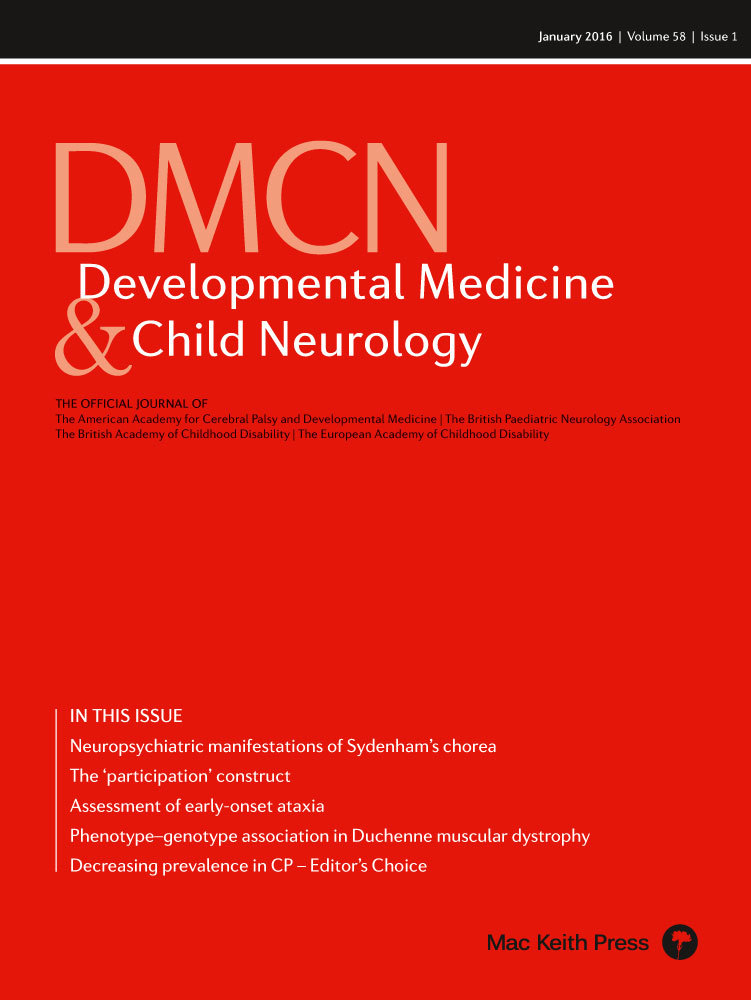Filling a lacune in perinatal stroke outcomes
Abstract
This commentary is on the original article by Ecury-Goossen et al. on pages 49–56 of this issue.
Focal vascular injury is a leading cause of perinatal brain injury, cerebral palsy (CP), and lifelong physical disability. What was historically ‘congenital hemiplegia’ is now recognized as stroke in most cases. Thanks to modern neuroimaging, classification has evolved to recognize and accurately diagnose specific perinatal stroke diseases. Sinovenous thrombosis, periventricular venous infarction, and hemorrhagic stroke are included, but the most common are arterial ischemic strokes.
Ecury-Goosen et al. describe in their paper neurological outcomes in a series of children with perinatal perforator stroke.1 From an original cohort of 55 participants, simplified outcomes were available in 37. It should be noted that many were premature and most had additional injuries, with only 14 having single isolated unilateral perforator stroke. Two main associations were required for poor outcome: direct motor tract injury for CP and concomitant brain injury for poor neurological outcomes including epilepsy. Issues of scientific interest and clinical relevance were identified.
Patterns of perforator perinatal arterial ischemic strokes have been described and excellent anatomical references are available.2 Acute symptoms are uncommon compared to typical arterial neonatal strokes that are typically recognized following seizures.3 Many were detected via ultrasound, possibly explaining the high proportion of preterm infants. Studies of perforator stroke pathophysiology are few with similar limitations to other perinatal stroke studies that describe an inconsistent list of possible associations without strong evidence supporting causation.
Although a lack of acute symptoms might suggest a favorable neurological outcome, such a simplification would ignore the well-established outcomes from typical perinatal strokes where deficits emerge over time.4 Common outcomes like hemiparetic CP often manifest by 4 to 6 months but more complex outcomes such as cognition and learning cannot be assessed for years. Consistent with previous perinatal stroke studies, injuries to the corticospinal tract (posterior limb of the internal capsule) were associated with CP, a biomarker with some utility for family counseling and perhaps patient selection for rehabilitation trials.
An analogy is drawn to lacunar infarction in adults, a term also not entirely defined despite a much greater incidence.5 In common is the primary pathophysiology – ischemic infarction in perforating cerebral artery territories – as well as the frequent occurrence of multiple and/or subclinical events and comorbid large artery strokes. Entirely different are the risk factors and possible causative mechanisms. However, if a stroke syndrome described for decades that has undergone rigorous epidemiological study across thousands upon thousands of patients has not yielded a specific intervention and only limited prognostic utility, should this dampen our expectations of how this new knowledge of perinatal perforator stroke outcomes can influence clinical management?
Most perinatal arterial strokes are presumed to be embolic with arteriopathy being exceedingly rare. Common findings of bilateral strokes with normal cardiac anatomy and no recurrence suggest placental embolism is a likely mechanism. The relative incidence of perforator stroke is unknown, but this study and its predecessors suggest it occupies a relatively small proportion of perinatal strokes. This may be consistent with a random distribution of proximal emboli proportionate to regional cerebral blood flow, including the vast majority going to larger middle cerebral artery branches (left more than right). With so many perforator strokes being asymptomatic, the actual incidence is presumable much higher.
Do small, deep vascular injuries matter? Examples from other perinatal stroke syndromes suggest they do. Lack of cortical injury does not exclude the possibility of neurological morbidities typically localized to this location. Many perforator strokes were multifocal and bilateral injury to structures such as the thalamus or basal ganglia may impair cognitive development. Even more concerning are increasing associations described between perinatal stroke deep grey matter injuries and severe epileptic encephalopathies, such as continuous spike and wave in sleep.6 The occult nature, detrimental developmental effects, and potentially treatable nature of such problems mandate careful clinical management and screening of children with perforator perinatal strokes.




